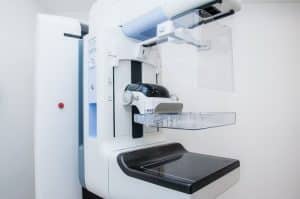Is A Mammogram Safe?
 What is a Mammogram?
What is a Mammogram?
A mammogram is a diagnostic image that allows doctors to look for changes in breast tissue. The mammography process uses a practical x-ray machine with a very low dose of radiation. This helps to minimize the risks associated with medical radiation exposure.
Why Would Someone Be Skeptical to Get One?
A number of myths have developed over time in regards to mammograms and whether they are necessary. The procedure often involves some brief discomfort as the breasts are positioned for imaging. Additionally, there are reasonable concerns about long-term effects of radiation exposure.
Luckily, a certified facility uses only a tiny amount of radiation when performing mammograms. Mammograms also has health benefits that aren’t associated with any other type of check-up or diagnostic imaging available today. There is truly no replacement for it.
The Benefits of a Mammogram
A mammogram is the most effective way to catch the earliest signs of breast cancer, which occur even before there are any noticeable changes to the breasts. Mammograms can also guard women against “false positives,” believing that they may have breast cancer when a growth is benign. No other procedure develops an image of breast tissue with the same level of detail.
There are two types of mammogram: A traditional (2D) image and a 3D mammogram. Both are effective if performed regularly based on a woman’s age, risk factors, and circumstances. That said, the 3D mammogram is the most advanced form of the procedure. It helps pinpoint growths that might otherwise be obscured by dense breast tissue.
Who Makes a Good Candidate for One?
There have been varying interpretations about how frequently women should get a mammogram. Risk factors, like a family history of breast cancer, generally mean you should get more frequent mammograms and perform breast self-examination monthly. Whether or not a mammogram should be sought on a regular basis depends on age.
When Should Someone Get a Mammogram?
According to the latest standards, women aged 40 and over should get a mammogram each year even if they have no major risk factors for breast cancer. A mammogram should also be done as soon as possible if you notice growths or structural changes to the breasts.
Although mammograms before the age of 45 are considered optional, women aged 45 and older should get a mammogram annually until age 54. These are peak times when most women will be at a higher risk of developing breast cancer.
Women aged 55 and older can choose to switch to a schedule of one mammogram every two years. That said, it’s still crucial to perform breast self-examinations on a regular basis and to follow up with a doctor if any localized symptoms arise.
Even if you don’t have any known risk factors and aren’t experiencing symptoms - mammograms are an essential part of women’s health. Choosing the right provider will help you get the most benefit from your mammogram screening in a comfortable and supportive environment.
Pure Mammography of Long Island helps women of all ages get the screening they need to maintain vibrant health. You do not need a referral from your gynecologist, primary care physician, or other doctor to set up a mammogram with us. To learn more or schedule your mammogram appointment, contact us.
 What is a Mammogram?
What is a Mammogram?